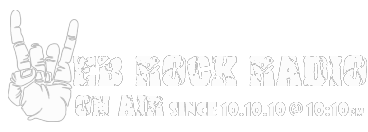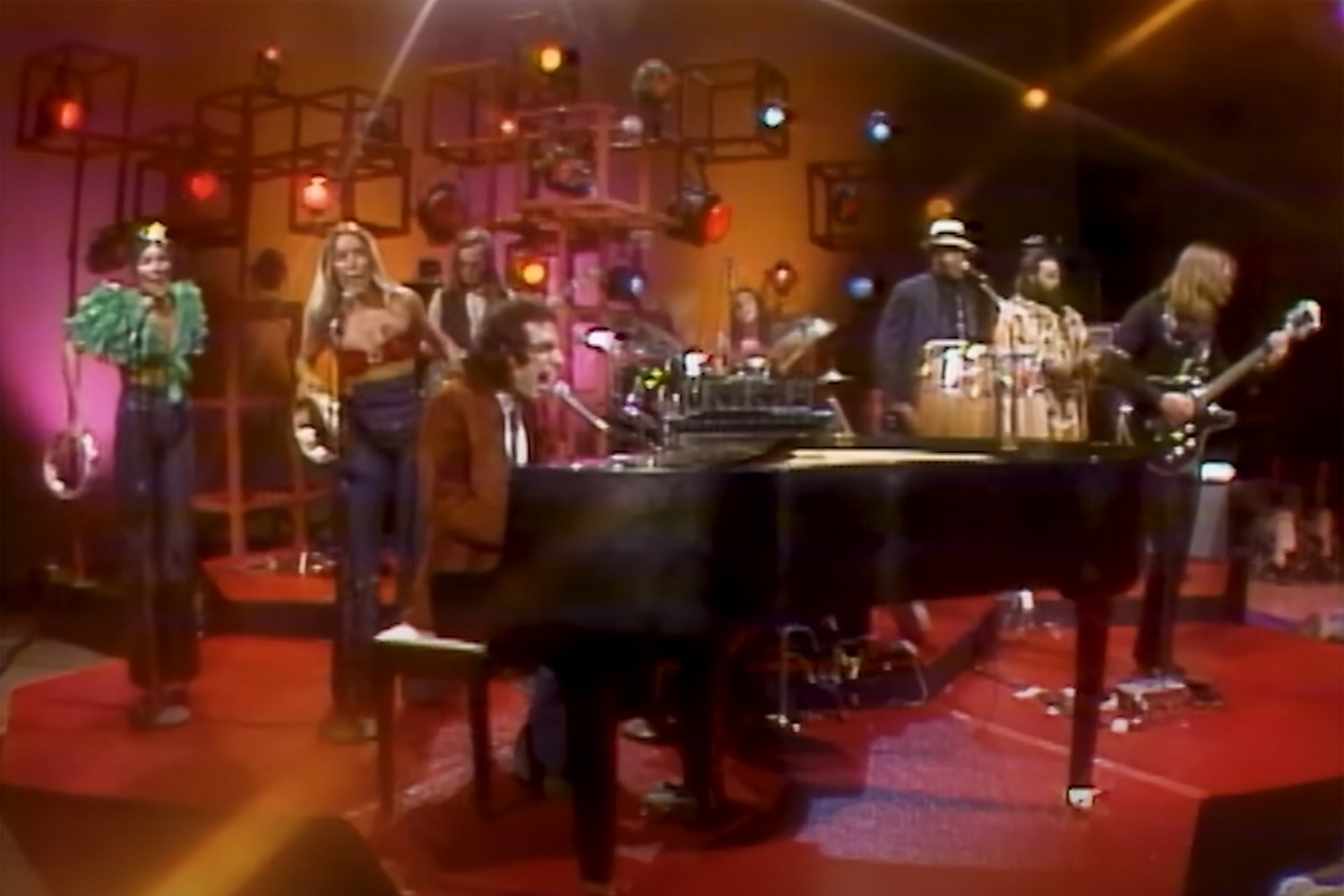Steely Dan hated touring. That’s been the accepted narrative for a long time. But it’s one former guitarist Jeff “Skunk” Baxter questions.
“I’m not sure that’s actually 100% true,” he tells UCR. “I know [Walter] Becker and [Donald] Fagen enjoyed the concept of saying [that], but we toured a lot in the beginning.”
Baxter has logged countless studio hours with artists like John Mellencamp, Carly Simon, Ringo Starr and Joni Mitchell. Still, his lengthy stints with both Steely Dan and then the Doobie Brothers put him on the map, because of his playing – and okay, yes, also his unforgettable mustache.
He’s been out on the road sharing stories from his lengthy career during a series of intimate concerts in support of his debut solo album, Speed of Heat, which arrived in 2022. While the prospects of releasing a record under his own name might have been daunting, Baxter enjoyed the experience so much that he admits to thoughts of a sequel.
During a recent conversation, he discussed the album, as well as some milestones from his storied past.
What brought you back to Steely Dan’s “My Old School” and the version you recorded for your album?
I used to sing it live with Steely Dan. For some reason, Donald wanted me to do it and I thought, “Okay, I’ll give it a try.” The more we played it, the more energetic it got. It reached the point where it was really rockin’. I thought, “Someday, I’d really like to explore just how far I could take this,” in terms of energy. This version is pretty thermonuclear, I’d say. [Laughs]
You were going to have Steven Tyler sing it initially.
Steve’s one of the best rock singers I know. I thought it would be a great addition to the performance and to the energy level that I was looking for, for the song. He’s an old friend, so I thought I’d ask and see if he wanted to do it. His response certainly surprised me. I just did it as a scratch vocal for him, so he could know where the vocal was. I had really no intentions of singing it on the record – but he knows more about this stuff than I do. So I trusted him and I still do. He said, “You oughta do it.” I said, “Okay, I’ll take a shot.”
That says a lot about Steven.
That’s also a sign of a great musician, to look at something from an objective point of view, not from a subjective point of view.
Listen to Skunk Baxter’s Update of ‘My Old School’
It’s also being aware of what the song needs or recognizing when it doesn’t need anything.
That’s certainly an important aspect of being a studio musician, that’s for damn sure. I recall a situation where Gary Katz, who was the producer for Steely Dan, was producing a female singer. He called me and said, “Listen, I’ve finished this record, sort of. I want you to come in, bring all of your stuff. I want you to listen to every track and tell me what it needs.” I came in with everything and it was all set up. I listened to the whole album and said, “Gary, it doesn’t need anything. It’s just fine.” He said, “That’s why I pay you triple scale.”
I spoke with Gary in recent years. Donald and Walter are legendary for putting musicians through their paces. He told me a great Don Henley story. What’s a moment that pushed you as a musician?
One example was when we did “East St. Louis Toodle-oo,” with the idea that each of us will pick one of the instruments from the original Duke Ellington recording and play it on another instrument. What would that instrument be? I picked the trombone part and I figured, “Well, since the trombone is known for being able to slide between notes, I think I’ll take a shot on pedal steel.” That was a challenge but I like a challenge – and to me, it gave me an opportunity to really push my abilities and push the envelope.
READ MORE: The Most Overlooked Steely Dan Song From Each Album
I love hearing Michael McDonald on this album. There’s a vulnerability you were able to capture, the way he approaches his vocal on “My Place in the Sun.”
Originally, it was going to be an instrumental record. When I mentioned to Mike McDonald that I was doing a solo project, he said, “Well, you know, if you want me to do something on it, I’d love to.” I thought, “Yeah, why not?” The idea was, okay, you’ll write with myself and [producer] CJ [Vanston], but let’s try something that’s out of your wheelhouse.” This is what friends are for. If it’s terrible, it’s my fault. If it’s great, you take the credit for it. But [the idea is] to try something that’s very different. I thought he did an incredible job. I don’t think he’s ever done anything like this. It’s so different. But again, it showcases his talents and it gave him an opportunity to open up.
Listen to Steely Dan’s ‘East St. Louis Toodle-oo’
Your version of “Do it Again” feels authentic to the way Donald and Walter would approach songs. They were always looking to turn things inside out and try something different.
Well, they were certainly standing on the shoulders of giants. That was John Coltrane’s whole thing, to find one note and see how many different approaches he could come up with. Charlie Parker would take a chord and do the same thing. Miles Davis realized that he was not going to be Dizzy Gillespie, so he picked his notes very carefully. I always think back to John Coltrane’s version of “My Favorite Things.” I mean, it’s the last song that you would think that John Coltrane would take on – but for some reason, he saw that this was a canvas he could paint on.
Steely Dan did some shows with Frank Zappa. How did that combination fare?
I can’t recall any strange juxtaposition or any conflict of any kind. I think we were both curious about each other. You know, he would come and listen to us and we were listening to him. Frank was kind of a New York guy as well. He had that New York musician attitude that I have and Walter and Donald and Denny [Dias], Dave [Palmer], we all had that flavor about us. I just really remember enjoying the opportunity [to share the bill with Zappa].
READ MORE: How Steely Dan Might Have Become Like the Grateful Dead
It’s known that Donald and Walter weren’t big fans of touring initially, in those days. Why do you think it was difficult for Steely Dan to tour back then?
I’m not sure that’s actually 100% true. I know that Becker and Fagan enjoyed the concept of saying, “We don’t want to play live. We can’t get the perfect sound.” But we toured a lot in the beginning. Everybody had a great time. Someone sent me a copy of [the band’s appearance on] Midnight Special, where we did “My Old School.” It looks to me like Donald is having a rip-roaring time. So I’m not quite sure that’s 100% – I mean, I get the idea of purity and perfection, but some of those gigs that I remember were pretty smokin’.
How did you end up forming the supergroup, the Best, with Joe Walsh, Keith Emerson and John Entwistle?
We were the house band at the China Club in L.A. It was fascinating that all of the sudden I’m getting calls from friends of mine like Elton John and a guy like Bruce Springsteen saying, “I really want to come play at the China Club” – because the house band was pretty good. So we started doing shows with different people and playing amongst ourselves. Michael Jensen, my publicist, came in one day and went, “You know what? We should do something with this.” He got together with a Japanese promoter and we ended up doing five shows – four in Japan and one in Hawaii. So again, it was just like, “Well, since there’s really no pressure to be anything or to promote anything, let’s just have some fun.” You know, there was no corporate or business angle to it. I remember during rehearsals one time, we were doing “Boris the Spider,” John Entwistle’s song. Somehow or other, I started playing the theme from Jaws over it. Anytime you do anything in the classical vein with John or any of the other players, it’s like lighting dry grass. Keith is classically trained, so we were about three or four bars into it and he started playing the melody from Jaws [as well]. It’s in his DNA.
So it’s like, okay, from there, let’s go to “Night on Bald Mountain” from Mussorgsky. Keith was obviously familiar with that [because of Emerson, Lake and Palmer’s adaptation of Pictures at an Exhibition, and John was classically trained on French horn. So it wasn’t like we were going to any place that nobody knew. I even studied classical piano for eight years. So bingo! Somehow or other, we ended up going into “The Rite of Spring” by Igor Stravinsky and then back into “Boris the Spider.” I mean, this was kind of what this thing was about. There were no limits. There were no boundaries. No limitations at all. The depth of musical talent in the band, there wasn’t anything you couldn’t do. Some of the stuff we wrote out when we played it live, simply because Keith had arrangements that he wanted to do. “Fanfare for the Common Man,” he’d written out the charts. Yeah, I wanted to play what he wanted me to play! Because I loved what he’d written. [Laughs] But it’s funny, it was a combination of reading the chart and then going out, kind of off-the-ball, coming back and reading the chart and then going back and trying something different again! I loved it. There was so much energy and it was so much fun.
Why These Classic Rock Acts Hate Their Own Records
Over a lengthy career, certain pitfalls also present themselves: Band members leave, songs become one-hit wonders, sounds go out of style. Then you start to hate your own records.
Gallery Credit: Nick DeRiso

